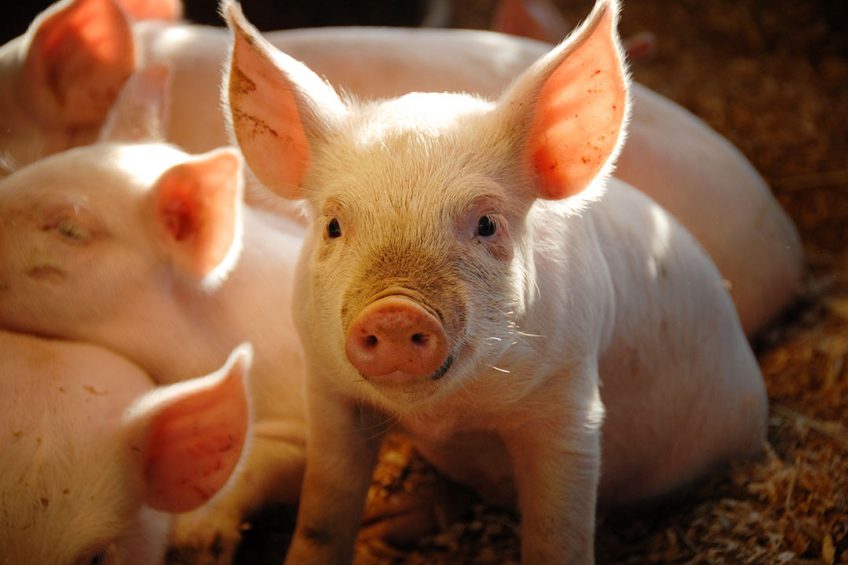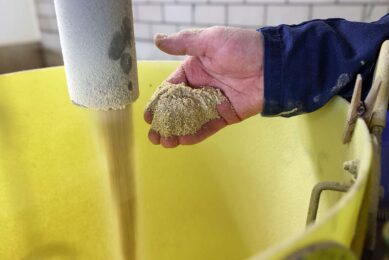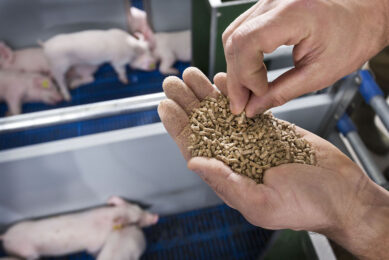All about ‘sweet’ in 6 main questions

Most young piglets appreciate and more readily accept sweet taste. That is why high intensity sweeteners are used as an incentive to switch from liquid to solid feed. Now what makes ‘sweet’ so attractive for piglets and what difference does it make? The answers follow in six questions below.
Weaning is a critical phase for young animals. Piglets are usually weaned at the age of 3 to 4 weeks, and at this stage their gut is not yet fully mature nor able to completely digest solid, complex food. It is known that if piglets do not eat properly, their gut atrophies, leading to impaired nutrient absorption, diarrhoea and other health issues. That is significant because growth delays that manifest early on are difficult to compensate for later. The main challenge is to stimulate feed intake in order to promote gut maturation and thus piglet’s health and growth.
Commonly used in feed to enhance appetite by providing an attractive taste, the function of taste enhancers is to target the five main taste receptors, namely: sweet, salty, bitter, acid and umami.
A sweetened feed is indeed more likely to be accepted by young animals. Many tests and studies have demonstrated the positive effect on their overall condition and, consequently, on their performances. The primary goal of sweeteners is to improve the transition from the liquid feed (suckling) to solid feed.
 What makes ingredients actually taste sweet?
What makes ingredients actually taste sweet?
To be perceived as sweet, an ingredient needs to bind to sweet taste receptors which have been shown to be present at the surface of the tongue. These taste receptors are made of 2 subunits, T1R2 and T1R3, which need to be close to each other and bound to a sweet molecule to be activated.
When a sweet molecule binds to these receptors a message is then sent to the brain via a neurotransmitter. Different molecules have demonstrated the ability to activate the sweet taste receptors: sugar, as well as high intensity sweeteners such as saccharin, stevia or neotame. Some aromatic molecules have also demonstrated the ability to activate and modulate the perception of sweet tastes.
 Do pigs’ tastes change over time?
Do pigs’ tastes change over time?
Pigs’ tastes do not change over time. However, sweeteners primarily target the first phase of a piglet’s life. Indeed, the main target is to improve the development of the gut and to support the transition from liquid to solid feed.
These steps are critical for the proper development and growth of animals. After the pre-starter and starter phase, the use of sweeteners can be continued, but the main target will be different. For the grower and finisher part as well as for sows’ feed Sweeteners can be used in order to overcome the potential bitter taste of raw materials during the grower and finisher phases, as well as for sows’ feed. It also supports glucose absorption and improves the performances of the feed.
 Do pigs and humans have a similar perception of sweet?
Do pigs and humans have a similar perception of sweet?
The mechanisms of perceiving sweet tastes are the same between pigs and humans. They both have the same receptors and the same two subunits, T1R2 and T1R3, to detect them. However pigs have more taste buds compared to humans with an average of 15,000, compared to humans 9,000, which makes them potentially more sensitive to sweetness than humans are.

 What effects does ‘sweet’ have in pigs’ mouths and guts?
What effects does ‘sweet’ have in pigs’ mouths and guts?
Once ingested, the sweet molecules contained in the feed will be solubilised in the saliva. A sweet molecule, or sweetened flavour, will bind to the sweet taste receptors present at the surface of the pig’s tongue, delivering a signal to the brain which will enable the animal to perceive the sweet taste.
These receptors are activated by any sweet products, and even more so by high intensity sweeteners that are much stronger than regular sugars. That strong sweetness improves the palatability of feed, stimulating feed intake. It also allows for the masking of bitter off-notes that may come from unpalatable raw materials or medicine. But that is only the tip of the iceberg. The most interesting part is what is happening below the surface: the effects on the gut.
 Does the gut also recognise sweetness?
Does the gut also recognise sweetness?
Working with major universities, Pancosma’s R&D department has opened up new frontiers in animal nutrition with innovative discoveries in gut-to-gut communication. Since 2008, these researchers have been heavily involved with the scientific community to better understand the key mechanisms of the ‘gut effects’, promoted under ‘Intelligent Gut Action (IGA)’ and how they can be applied to animal nutrition. They have demonstrated that sweet taste receptors are not only present on the tongue, but also in the gut at the surface of enteroendocrine cells present on the gut epithelium.
When sweet molecules present in the intestinal lumen are detected at the enteroendocrine cell level (see Figure 1), it triggers internal signalling on pathways, which causes the release of a gut hormone called GLP-2 in the lamina propria. This hormone diffuses across the lamina propria to activate enteric neurons which will send a message to the enterocyte cell via neurotransmitters.
Figure 1 – Cellular mechanisms induced by a sweetener* in the pig gut.
This leads to a doubling of sodium/glucose co-transporter 1 (SGLT-1) at the epical membrane of the enterocytes. Activated enterocytes increase the absorption of glucose, water and sodium.
 What difference does sweetened feed make?
What difference does sweetened feed make?
The perceived improved taste on the tongue stimulates feed intake and the increased level of SGLT-1 induced by the presence of Sucram increases glucose uptake, at the gut level, and availability for the animal.
Indeed, a large set of research and trials have been done to define the effects of the sweetener on piglets. For example, independent field trials of 384 weaner pigs revealed that the sweetener increased feed consumption (+6%), body weight gain (+4.7%), and Feed Conversion Ratio (-2.6%). As the sweetener is produced with a balanced formula of ingredients, the product performances are optimised for both the sensorial and physiological effects. Thanks to both effects the sweetener has on the tongue and the gut, animals’ performances and development are improved.
Figure 2 – Overview of independent field trials of the use of a sweetener* on piglet performance.
 Beheer
Beheer










 WP Admin
WP Admin  Bewerk bericht
Bewerk bericht